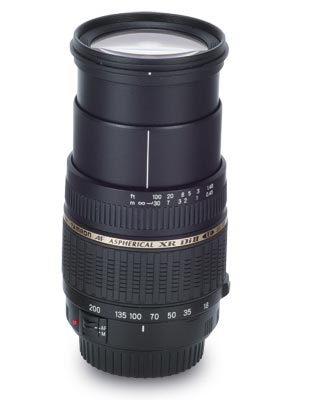Tamron 18-250mm f/3.5-6.3 Di II LD IF Review
Tamron 18-250mm f/3.5-6.3 Di II LD IF Review
When we originally tested this lens back in June of last year it was the longest of its type, though Pentax has caught up...

Verdict
Pros
- Length, good 18mm resolution, good central CA control
Cons
- Poor corner CA control
Key Specifications
- Review Price: £230
When we originally tested this lens back in June of last year it was the longest of its type, though Pentax has caught up.
To achieve that length Tamron has used 16 elements in 13 groups, including a Low Dispersion (LD) optic, an Anomalous Dispersion (AD) element and two hybrid aspherical elements. A new set of coatings has also been added, including internal surface coatings on plural lenses and a multilayered coating on single elements. Despite its small stature and reasonable price the lens handles well, with fast and quiet AF and a solid yet fluid zoom action. Macro capability is claimed, with focusing down to 45cm (common to most of these lenses) though it‘s not ‘true’ macro, offering a 1:35 magnification ratio.
Image Quality
The 18mm end displays good resolution exceeding the Nikon and only just falling short of the Sigma OS lens. In the centre of the frame chromatic aberration control is among the best in its class, but loses its kudos towards the edge and corners as fringing rises to about two pixels. Similarly, at 250mm the central control impresses, but deteriorates at the corners. Resolution at the long end is average.
Verdict
Good resolution at 18mm and excellent control over chromatic aberration
Trusted Score
Score in detail
-
Value 9
-
Design 9
-
Image Quality 8
-
Features 9

